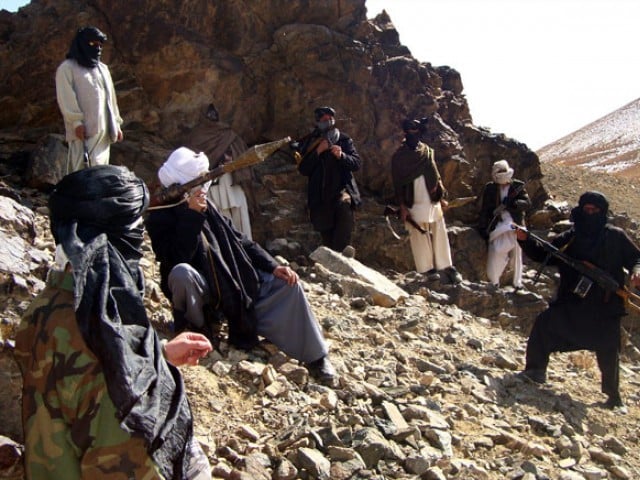
The Haqqani network is the talk of Washington and Islamabad, seen as pivotal to the endgame in Afghanistan and probably trending on Twitter. However, few seem certain about the exact location and structure of this elusive group.
Allegedly based in the North Waziristan tribal region and in some provinces across the border in Afghanistan, the most lethal of all Taliban insurgent groups has struck serious blows to diplomatic relations between the US, Pakistan and Afghanistan.
The US blames the network for most attacks on international forces based in Afghanistan, including the 2008 assassination attempt on Afghan President Hamid Karzai, the attack on the Indian embassy in Kabul in the same year and the Kandahar jailbreak earlier this year.
The most serious attack was last week’s 20-hour commando-style assault, carried out in Kabul’s highly fortified green zone, on the American embassy and the country headquarters of Nato. The US also claims the network was behind this attack.
What is the Haqqani network and what makes it, as officials in Washington have put it, the most dangerous group on earth?
The answer to these questions, according to experts on the issue, lies in understanding the organisational structure, combat capabilities, fundraising abilities and cross-border sanctuaries it has on either side of the 0Durand Line.
(Read: America’s SPECTRE syndrome in Afghanistan)
The leadership
Jalaluddin Haqqani founded the group, deriving strength from his Zadran tribe, but he no longer has daily operational command over the group.
“His role in fact is limited to the spiritual guidance of the associates … he is the binding force that keep them together,” said Brigadier (Retd) Muhammad Saad, an expert on Taliban insurgency. “He is too old and too frail to lead the group.”
In January it was reported that Jalaluddin, also known as Khalifa or Caliph among his group, died of natural causes in the Khost province of Afghan. The news was later proved to be untrue and his current whereabouts are unknown.
His son Sirajuddin Haqqani is now leading the group.
Siraj, however, does not have total control. His role, besides being the overall head, is limited to non-military strategic issues. His remit is largely political and includes negotiations with other groups and dealing with authorities in Pakistan and Afghanistan.
“He hardly deals with the group’s military issues,” said a commander belonging to the network by telephone from Mirali, a town in North Waziristan where it supposedly has a strong presence.
A rallying figure in tribal badlands
Siraj is such a powerful figure due to the respect he commands from other groups, such as Tehreek-i-Taliban Pakistan, in tribal areas. “It looks like he is the one magnet everybody wants to stick to,” said Fida Khan, an Islamabad-based journalist who has been covering militancy in Pakistan for a Japanese publication for more than a decade.
“From the militants’ perspective, Siraj is the most charismatic leader acceptable to all,” wrote slain Pakistani journalist Syed Saleem Shehzad in an article last year.
But the network is not all about Siraj, though the Haqqani family tries to controls most of its activities. The group is divided into broader categories for specific objectives and members have well-defined roles.
Sangeen Zadran and Baduruddin Haqqani
Mullah Sangeen Zadran is the network’s main military commander. “He is the man,” said a fighter from the group about Sangeen, who reportedly has thousands of volunteers under his control.
According to some reports, Sangeen is the nephew of Jalaluddin and belongs to the Zadran tribe from which the Haqqani family hails. There is no confirmation of this, however.
Sangeen, though, must defer to Badaruddin Haqqani, one of Siraj’s younger brothers. This seems another example of the Haqqanis’ conscious attempts to keep control within their family.
Last month the US State Department added Sangeen to their list of specially designated global terrorists. The designation allows the US to freeze Sangeen’s assets, prevent him from using financial institutions and prosecute him for terrorist activities. The State Department describes Sangeen as ‘a senior lieutenant to Haqqani network leader Sirajuddin’. Sangeen is also the shadow governor for Paktika province in Afghanistan.
Nasiruddin Haqqani, also known as Dr Khan
Another son of the family, Nasiruddin, is thought to be the chief fundraising official of the group, operating across the Arab world, Pakistan and Afghanistan.
According to a couple of individuals who were in touch with the family before 9/11, Nasir is the son of Jalaluddin’s Arab wife, which makes him an ideal person to raise funds from rich families from the Gulf.
Last year it was reported that Pakistani intelligence agencies arrested Nasir, popularly known as Dr Khan or Dr Alamgir, before freeing him.
Improvisation
According to Brigadier Saad, what makes the Haqqani network unique is its capability to improvise according to the situation.
“They appear to have remarkable abilities to adapt,” said journalist Fida Khan. “They can disperse and then re-gather overnight,” he added, “This makes them less vulnerable for penetration from outside and crackdowns.”
Published in The Express Tribune, September 22nd, 2011.

1719211536-0/BeFunky-collage-(81)1719211536-0-165x106.webp)





















COMMENTS
Comments are moderated and generally will be posted if they are on-topic and not abusive.
For more information, please see our Comments FAQ